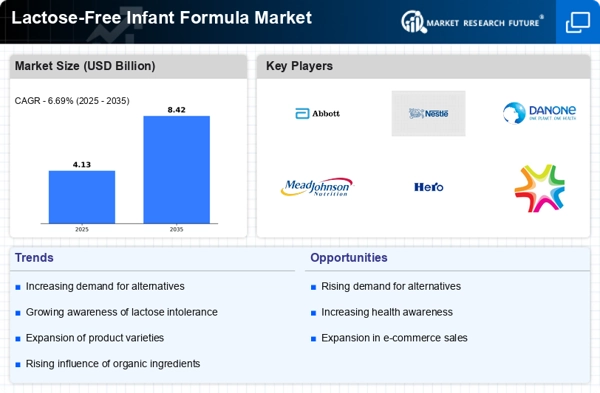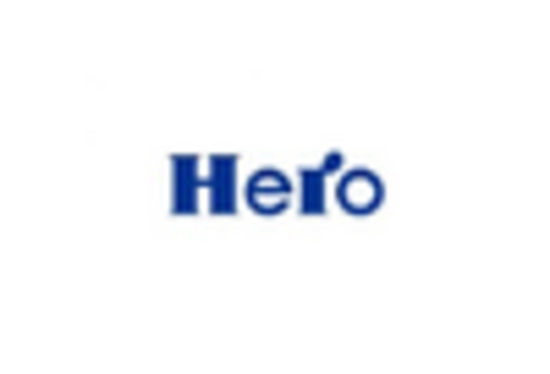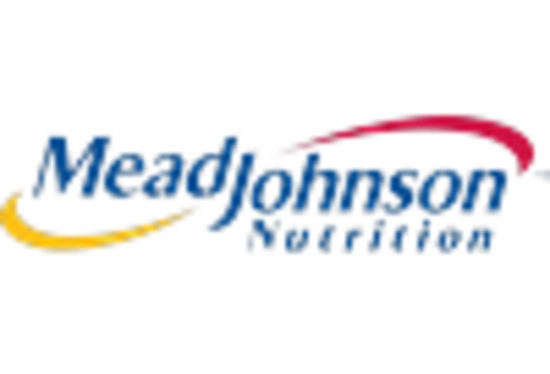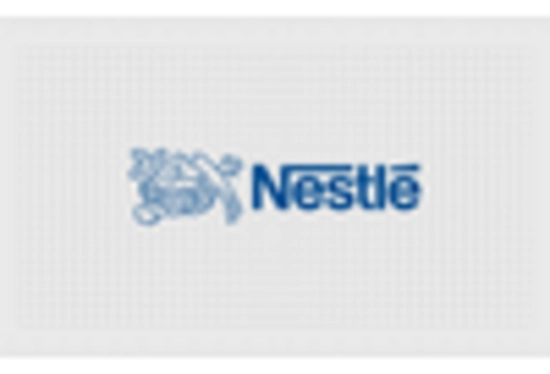Expansion of Product Offerings
The Lactose-Free Infant Formula Market is experiencing an expansion of product offerings, which serves as a significant driver for market growth. Manufacturers are increasingly developing a variety of lactose-free formulas that cater to different dietary needs, including organic and fortified options. This diversification is essential in attracting a broader consumer base, as parents are looking for specialized products that align with their values and preferences. The introduction of new flavors and formulations is also contributing to the market's dynamism, allowing for greater consumer choice. As the market continues to evolve, the availability of diverse lactose-free infant formulas is likely to enhance overall market penetration and consumer acceptance.
Rising E-commerce Sales Channels
The rise of e-commerce sales channels is transforming the Lactose-Free Infant Formula Market. Online shopping platforms provide parents with convenient access to a wide range of lactose-free products, often at competitive prices. This shift towards digital retailing has made it easier for consumers to compare products, read reviews, and make informed purchasing decisions. As e-commerce continues to grow, it is anticipated that the market for lactose-free infant formulas will expand, as more parents turn to online platforms for their shopping needs. The convenience and accessibility offered by e-commerce are likely to enhance the visibility of lactose-free options, thereby driving sales and market growth.
Influence of Pediatric Recommendations
Pediatric recommendations play a crucial role in shaping consumer choices within the Lactose-Free Infant Formula Market. Healthcare professionals increasingly advocate for lactose-free options for infants who exhibit signs of lactose intolerance. This endorsement from pediatricians not only reassures parents but also drives demand for lactose-free formulas. As more healthcare providers recognize the benefits of lactose-free diets, the market is likely to see an uptick in sales. Additionally, educational campaigns aimed at informing parents about lactose intolerance and its implications for infant health are expected to further bolster the market. The alignment of pediatric advice with consumer preferences is a powerful driver of growth in the lactose-free segment.
Shift Towards Health-Conscious Parenting
There is a notable shift towards health-conscious parenting, which significantly influences the Lactose-Free Infant Formula Market. Parents today are increasingly informed about nutrition and are more selective regarding the products they choose for their children. This trend is reflected in the growing preference for lactose-free formulas, as parents seek to avoid potential digestive issues associated with lactose. Furthermore, the market for lactose-free infant formulas is projected to grow at a compound annual growth rate (CAGR) of approximately 8% over the next few years, indicating a robust demand driven by health-conscious consumers. This shift not only enhances the visibility of lactose-free options but also encourages manufacturers to innovate and expand their product lines to cater to this evolving consumer base.
Increasing Prevalence of Lactose Intolerance
The rising prevalence of lactose intolerance among infants is a primary driver for the Lactose-Free Infant Formula Market. Studies indicate that a significant percentage of infants experience some degree of lactose intolerance, leading to digestive discomfort. This condition has prompted parents to seek alternatives that do not contain lactose, thereby increasing the demand for lactose-free options. As awareness of lactose intolerance grows, more parents are opting for lactose-free infant formulas to ensure their children receive adequate nutrition without adverse effects. The Lactose-Free Infant Formula Market is thus witnessing a surge in product offerings tailored to meet the needs of lactose-intolerant infants, which is likely to continue as more health professionals advocate for lactose-free diets in early childhood.

















Leave a Comment